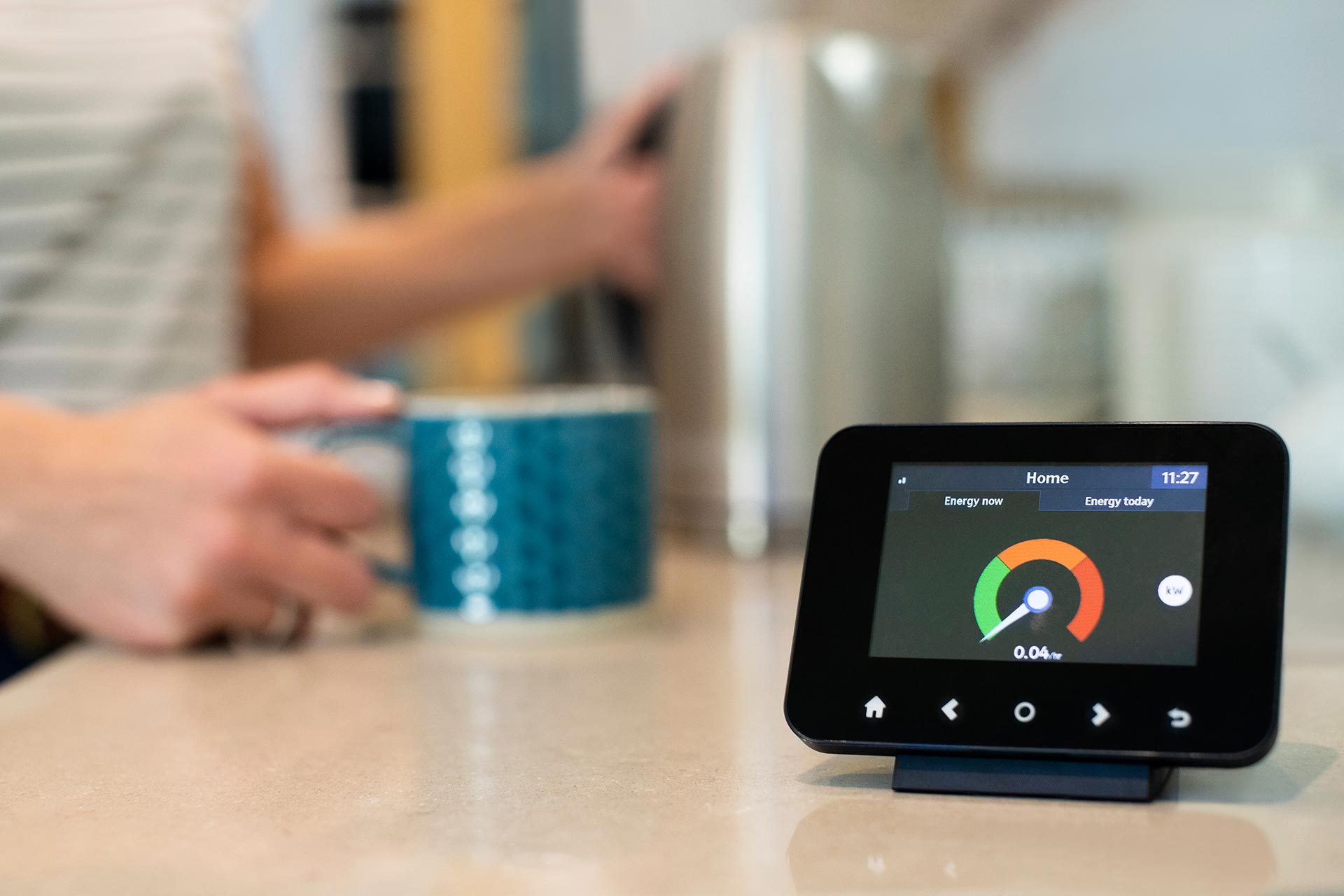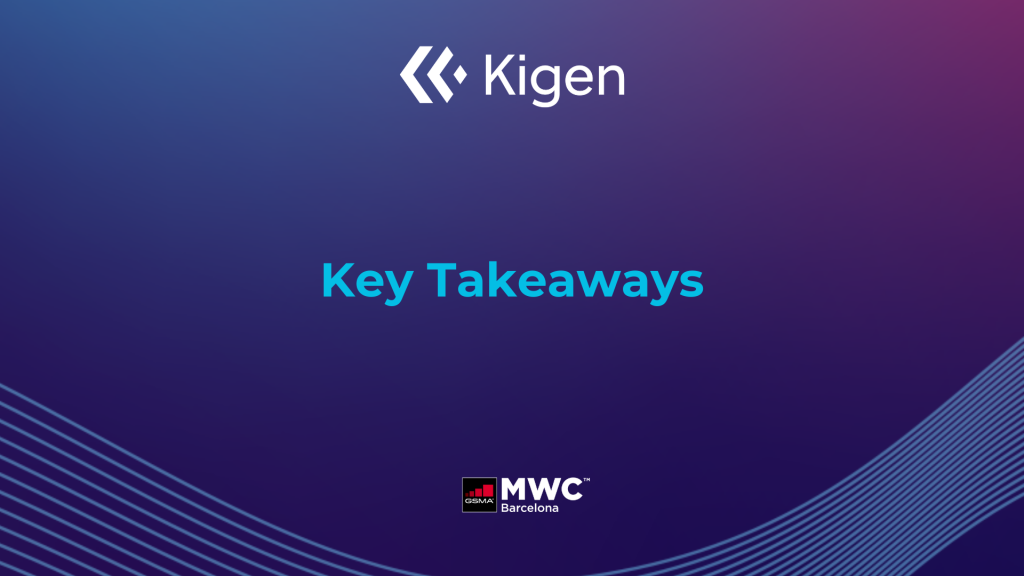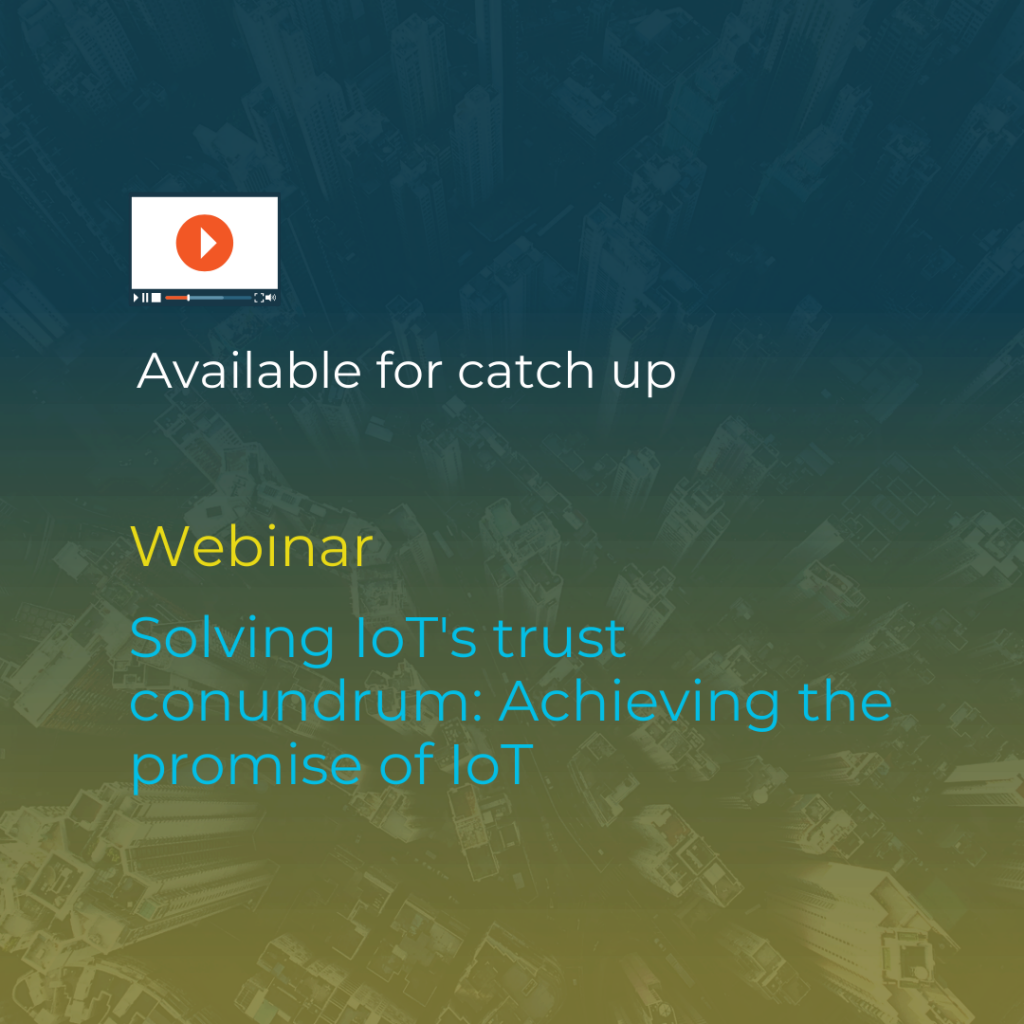
- Resources
- Blog
Unlocking new smart metering opportunities with eSIM
Cellular technology presents an attractive connectivity option for smart meter solutions. However, there are some hurdles to overcome.
Highlights:
- The global smart meter market will over 588 million units by 2022. Mobile network operators, OEMs and IoT service providers will capitalize from the rapid adoption of smart metering by utility providers.
- Cellular technology allows utility companies to connect their smart meters easily and inexpensively virtually anywhere.
- Kigen eSIM and iSIM solutions help overcome barriers to integrating cellular technology for large scale, cost sensitive smart meter deployments.
Automated meter reading is just beginning
Today, smart metering is largely associated with automated meter readings (AMR) that collect data automatically. It is often deployed where manual data collection is expensive and to minimize maintenance costs. However, the benefits of smart metering for utilities are much more encompassing. They range from improved voltage regulation, outage management and restoration, to enhanced security, operational efficiencies and network resiliency and reliability. Stronger customer relationships are also forged as end customers benefit from greater transparency, reliability and service.
By leveraging smart metering and other technologies, utility providers can start providing value-adding services. These include dynamic pricing, real-time billing and real-time access to connected devices for remote monitoring, analysis and control of usage. This opens new revenue streams for utility providers, positioning them as broader service providers. Smart meters can become hubs for interoperating with all sorts of Internet of Things (IoT) devices and sensors at customer locations.
Regulation landscape
In Europe, the EU and local government regulations are driving the mass rollouts of electric smart metering, with the roll-out target of 80% market penetration by 2020. The UK decided to mandate all energy suppliers to offer smart meters to every home by 2020 (a total of 26 million potential installations). Meanwhile, natural and man-made disasters are major driver for new smart meter technologies that enter the utility sector at a rapid pace. This is because smart meters can provide valuable functions during disasters and recovery.
Smart metering offers enormous opportunities, so it is not surprising that many utility providers have been quick to throw their hats into the ring. The ecosystem is growing too, with various major alliances forged between utility providers and automation producers. At the same time, more influential players from outside the utilities sector are coming to the market with various smart meter connected automation tools.
Overcoming hurdles with eSIM
Facing high expectations for reliability, utility providers run a 24/7 operation with constant monitoring of as many touch points throughout their network as is possible with associated alarming. Much of the utility’s smart metering infrastructure is highly distributed and often remote or not readily accessible. This is where reliable and flexible connectivity becomes critical with security of the communication necessary to protect and assure customer related data.
Contract lock-ins
One of the challenges that utilities face when considering their connectivity options is the long-term useful lifetime of smart meters. This is typically between ten to fifteen years, with some utilities assigning twenty years. Over these durations, the prospect of maintaining one single connectivity arrangement with a service provider is slim, which introduces uncertainty. As network operators will not typically commit to such long-term contracts, utility providers are worried about lock-ins and potential rate increases in renegotiations. The alternative to renegotiation brings other concerns around the logistics. Providers are concerned about associated cost and hassle of SIM swaps, which are required in order to switch network providers. Therefore, any low impact proposals for ‘future proofing’ cellular connected deployments greatly improve adoption of such connectivity.
The introduction of remotely updatable eSIM has offered a fresh connectivity approach for utility providers. eSIMs are manufactured with a cellular network identity (a SIM profile) to provide connectivity at first power up. They also offer a communication conduit for the electronic delivery of any subsequent service provider’s SIM. They remove the need for expensive site visits to swap SIMs and mitigate the lock-in concerns by making remote switching of network providers possible. Meters can be repurposed remotely for use on a new network, which extends meter’s useful life. As eSIMs are soldered, this makes them less attractive to would-be connectivity theft.
New opportunities for OEMs, MNOs and IoT service providers
According to GlobalData, there will be over 588 million smart meter units installed worldwide by 2022. This presents a sizeable market that meter manufacturers, MNOs and IoT service providers can tap into:
OEMs
- OEMs can incorporate eSIM functionality at the point of manufacture. This helps utilities overcome their key pain point of having to physically access smart meters to manage connectivity. Single SKU can now be manufactured for deployment globally, no matter where the meters are to be physically installed. Meter manufacturers have complete control over eSIM hardware. Only approved and tested eSIMs will be integrated in the meter. SIM sockets, which add costs and are prone to damage, are eliminated. Smart meters can now be tested in production with final network subscription, to assure connectivity performance when placed on site.
Mobile operators
- Utilities are no longer tied in with long contracts with other MNOs. This means that mobile operators can now have an equal opportunity to participate in large AMI rollouts. As a result, they can gain more subscribers. MNOs can either provide ‘connectivity only’ or act as an end-to-end solution provider. The latter means that they can facilitate integration of or provide back-end management, billing and remote cloud management systems. For example, China Mobile offers automated meter reading (AMR) service for electric utilities. This consists of an NB-IoT connected smart meter and a cloud-based AMR platform. The solution optimizes the meter reading process, provides insight into real-time energy consumption and enables accurate billing.
IoT Service Providers
- IoT service providers can help utility providers to optimise their connectivity costs by offering a unified connectivity management hub for a large number of eSIMs. They can offer a choice of network operators depending on geography and signal strength. They can also provide one contract that offers pre-negotiated rates for access to a range of networks.
The GSMA called on European mobile operators to act now to take advantage of the growing smart energy sector, by accelerating rollout of low power wide area (LPWA) NB-IoT and LTE-M networks. The GSMA CTO Alex Sinclair said: “The IoT is fundamentally disrupting the smart utility market by providing ubiquitous connectivity and real time, actionable data. Cellular IoT networks can take this further. They can offer energy providers a cost-effective solution to connect millions of smart meters. There is a real sense of momentum behind the rollout of mobile IoT networks with multiple global launches. However, there is still a huge runway for growth. We encourage operators to act now to capitalize on this clear market opportunity and further accelerate the development of the IoT.”
Cellular technology all the way
Utility providers need a secure, flexible and reliable communication infrastructure to connect and communicate with the smart meter network. Cellular technology offers an attractive connectivity option. Its wide coverage and support of NB-IoT and LPWA networks allow utilities to connect their smart meters easily and inexpensively virtually anywhere.
By utilizing the established, highly reliable communications wide area network (WAN) infrastructure, they can bring new services to market faster without taking on the costs of deploying and maintaining it themselves. Cellular technology guarantees a good long-term connection independent of the buildings that host deployed meters and gateways. Also, it allows firmware updates and maintains strong security best practices, which are typically stronger than other connectivity technologies.
The introduction of the NB-IoT and LTE-M technology has made a significant impact to the growing uptake of cellular connectivity for smart meter networks. It is ideally suited for the provision of reliable connectivity to a very large number of remote devices. Combined with its improved power consumption, reducing battery wear and the cellular grade communication security, it makes LPWA cellular connectivity an even more attractive and lower cost option. Unsurprisingly, utility companies are increasingly turning to LPWA and incorporating smart cellular communications infrastructures into their smart grids.
Flexible remote SIM provisioning from Kigen
With Kigen’s remote SIM provisioning (RSP) service, operators can securely onboard multiple smart meters over the air. For utilities, this means avoiding a long-term tie-in with an operator and the ability to switch cellular connection . After the initial contract ends, there will be no need for the costly engineer visit to change SIMs physically. Instead, the new chosen mobile operator can onboard and deploy their SIM profile to the smart meter remotely.
We work closely with industry partners and the standards community to realise iSIM. iSIM reduces the cost and adoption barriers of connecting cellular IoT devices by removing physical hardware and integration aspects of the SIM. Kigen iSIM aims to leverage the low footprint of Kigen SIM OS and partners’ Secure Enclave IP to securely place the SIM functionality within an IoT device’s SOC.
Interoperability is another barrier to integrating mobile technology for large scale, cost-sensitive smart meter deployments. Kigen RSP offers flexibility with a modular design for easy integration with MNO and IoT platforms.
Maintaining security is major concern for utility providers. In 2009, there was masse hacking of Puerto Rican smart meters, leading to widespread billing fraud. Kigen’s solutions offers SIM grade security. It ensures that mobile operators can deploy, host and assure the device’s unique identity and its associated network attestation credentials. This security can be further enhanced by adopting the principles laid out in the Arm’s Platform Security Architecture (PSA). You can download details of associated security requirements for smart meters in their threat model.
IoT service providers can help utilities ease their journey during the initial deployment years by utilizing proprietary connectivity management platforms. Such platforms allow easy, secure, and cost-effective connection of smart meters on multiple network standards with a single global mobility contract.
Kigen, Iskraemeco and Workz pioneer connected smart meters
We’ve teamed up with Iskraemeco and Workz to show how eSIM can benefit smart meter applications. Energy companies or smart meter operators will have the ability to download and swap the current cellular subscription with a new one remotely. This will enable savings from a better tariff plan, guaranteeing long term availability or quality assurance of the connectivity.
GSMA compliant Kigen’s M2M RSP product and M2M eSIM OS power their solution. Various companies are deploying them on a worldwide basis.
As the utility industry increasingly adopts SIM technologies, Kigen will make it easier to integrate SIM technologies and cellular IoT connectivity across devices and platforms.



